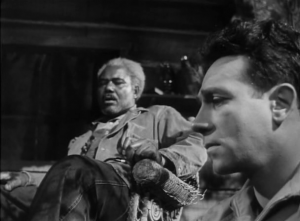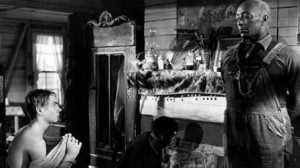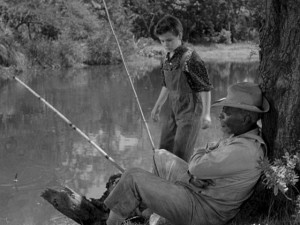A column for Caiman Cuadernos de Cine, submitted May 28, 2018. — J.R.
The commodification of film categories that publicists otherwise find difficult to market — especially “independent,” “restoration,” and “film noir”—often involves a certain amount of deception when it comes to existential identities.
“Independent” became a commercial category only after moguls maintained that the Sundance Festival was devoted to celebrating films without studio backing — even though “success” at Sundance meant a studio sale that typically entailed a loss of independence. “Restoration” is a label that absurdly gets slapped onto all sorts of real or alleged upgrades of older films, such as one with a newly mutilated and reconfigured soundtrack (the 1992 rerelease of Orson Welles’ Othello), a re-edit (the 1998 Touch of Evil), a belated first edit (the posthumous 2018 The Other Side of the Wind), and sometimes merely a new print. And “film noir” — a term whose meaning has already been slippery to begin with, applied retrospectively to a group of films said to share certain stylistic, formal, and thematic traits — now functions ahistorically and sometimes deceptively while increasing the market value of a given feature by obfuscating its politics.
On Criterion’s new Blu-ray of Frank Borzage’s Moonrise (1948), Peter Cowie’s interview with Hervé Dumont — whose book on the director should be shelved alongside Chris Fujiwara’s book for the same publisher (McFarland) on Jacques Tourneur — primed me perfectly for my second look at this masterpiece. It certainly performs this task better than Philip Kemp’s accompanying essay, which, in spite of useful information, falters in its insistence on framing Moonrise through the lens of film noir, and even more when, while rightly praising the character of Rex Ingram’s Mose, the author remarks that “It would be hard to think of another American film of the period where a black man acts as adviser and mentor to a white Southerner.” Not so hard if one thinks of Clarence Brown’s Intruder in the Dust (1949) and Tourneur’s Stars in My Crown (1950); and quite easy if, following Dumont’s lead on Moonrise, one regards the Tourneur masterpiece neither as a noir (a lazy escape hatch) nor as a western (as Jacques Lourcelles does), but as a discreet form of German Expressionism, implicitly favoring a thoughtful, progressive political philosophy over simple gloom and fatalism.
Indeed, what could make Stars in My Crown work perfectly on a double bill with Moonrise is that both films squarely face the darkest and ugliest aspects of Southern culture — the Klu Klux Klan in the former, the schoolboy cruelty and the myth of tainted blood in the latter — before using genuine folk wisdom to arrive at an affirmative conclusion that can view the South positively and progressively without collapsing into sentimentality. By contrast, part of what makes noir so fashionable — and which, Dumont implies, also helped to make Moonrise a commercial flop — is its cynical defeatism, another expedient escape hatch. Hopelessness sells.



